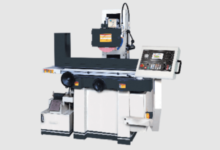The Role of Remodeling in Modernizing Outdated Office Spaces

Outdated office spaces can hinder employee productivity, affect client impressions, and reduce the overall value of a property. Modern businesses demand workplaces that are efficient, comfortable, and aligned with evolving professional needs. Through commercial remodeling in Cumming, organizations can transform uninspiring environments into dynamic and functional spaces. Thoughtful renovation strategies not only update the look of an office but also improve operational efficiency, sustainability, and employee satisfaction.
Creating Functional and Modern Workspaces
Modernizing an office involves more than changing its aesthetic; it requires creating a functional design that supports collaboration and focus. By rethinking layouts, integrating flexible work areas, and updating meeting rooms, businesses can foster an environment where teams thrive. Adding natural lighting, energy-efficient systems, and ergonomic furniture also contributes to a healthier workplace atmosphere.
Even seemingly smaller updates, such as improvements to restrooms and shared facilities, make a major difference. For instance, considering professional tips for remodeling a commercial restroom ensures upgrades that prioritize hygiene, accessibility, and design consistency, all of which enhance the overall user experience within the office.
See also: 5 Signs Your Business Needs Search Engine Optimization Services in Orange County Now
Reducing Disruption During Renovation
One of the biggest concerns during office remodeling is the potential downtime that disrupts business operations. Professional planning plays a critical role in minimizing interruptions. With phased construction schedules, temporary workspace arrangements, and strategic project management, companies can continue operating while improvements are underway.
Businesses that invest in understanding how to minimize downtime during a commercial remodel are better positioned to balance efficiency with progress. This approach allows them to upgrade outdated spaces without sacrificing productivity, ensuring employees can remain focused while benefiting from gradual improvements.
Enhancing Employee Wellness and Productivity
An updated office environment directly influences employee morale. Stale interiors and inefficient layouts can drain energy, while modern designs create an atmosphere of innovation and motivation. Features such as collaborative zones, wellness areas, and quiet rooms for focused work provide employees with options that match their working styles.
Additionally, modernized infrastructure, like upgraded HVAC systems, efficient lighting, and soundproofing, supports both physical comfort and mental well-being. These enhancements encourage productivity while reducing stress, positioning the office as a space where employees want to perform at their best.
Boosting Market Value and Professional Appeal
A renovated office not only benefits current employees but also strengthens the company’s professional image. Updated spaces create stronger impressions on clients and partners, highlighting attention to detail and forward-thinking operations. For property owners, modern renovations increase leasing potential and command higher market values.
Office spaces that reflect contemporary standards are in greater demand, making renovation a key driver of long-term financial gains. The return on investment is visible not only in higher rents or resale value but also in the ability to attract and retain top talent.
Conclusion
Remodeling outdated office spaces is a strategic decision that drives productivity, wellness, and long-term value. By focusing on functional layouts, thoughtful design upgrades, and seamless project execution, businesses can modernize their work environments without unnecessary disruption. A well-planned renovation ensures offices meet evolving needs, reflect professionalism, and support sustained organizational success.







